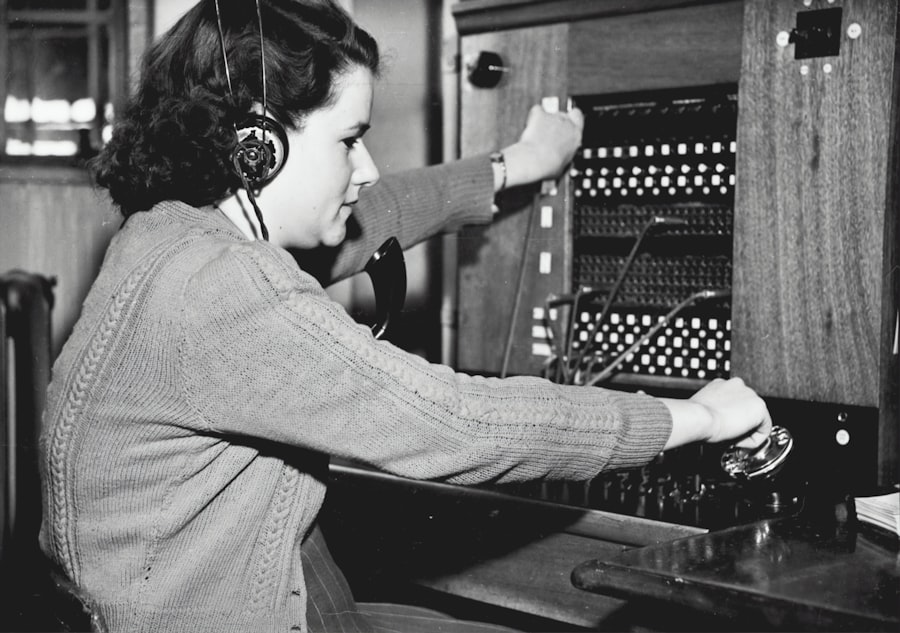The RTA (Roads and Transport Authority) Call Center serves as a pivotal component in the realm of customer service, particularly within the transportation sector. Its primary function is to act as a bridge between the authority and the public, facilitating communication and addressing inquiries related to transportation services. This includes providing information about public transport schedules, fare structures, and service disruptions, as well as assisting with complaints and feedback.
The call center is not merely a reactive entity; it plays a proactive role in enhancing the overall customer experience by ensuring that information is readily available and that concerns are addressed promptly. Moreover, the RTA Call Center embodies the principles of accessibility and responsiveness. In an era where customer expectations are continually evolving, the call center must adapt to meet these demands.
This involves not only answering calls but also engaging with customers through various channels such as email, social media, and live chat. By doing so, the RTA Call Center can cater to a diverse audience, ensuring that all customers, regardless of their preferred communication method, receive the assistance they need. The effectiveness of this service directly impacts public perception of the RTA, influencing customer loyalty and trust in the authority’s ability to manage transportation services efficiently.
Key Takeaways
- RTA Call Center plays a crucial role in providing customer service and support for the transportation authority.
- Effective communication strategies are essential for RTA Call Center to ensure clear and efficient interactions with customers.
- Utilizing technology such as AI chatbots and CRM systems can enhance the customer service experience in RTA Call Center.
- Training and development programs are important for RTA Call Center staff to improve their skills and knowledge in handling customer inquiries.
- Measuring and monitoring customer satisfaction is key to identifying areas for improvement in RTA Call Center’s service delivery.
Implementing Effective Communication Strategies for RTA Call Center
Effective communication strategies are essential for the RTA Call Center to function optimally. One of the most critical aspects of these strategies is active listening. Call center agents must be trained to listen attentively to customers, allowing them to fully understand the issues at hand before providing solutions.
This not only helps in resolving problems more efficiently but also makes customers feel valued and heard. For instance, when a customer calls to report a delay in public transport, an agent who practices active listening can gather all necessary details and provide a more tailored response, thereby enhancing customer satisfaction. In addition to active listening, clarity in communication is paramount.
Agents should be trained to convey information in a straightforward manner, avoiding jargon that may confuse customers. This is particularly important when explaining complex topics such as fare structures or service changes. Utilizing simple language and breaking down information into digestible parts can significantly improve customer understanding.
Furthermore, employing empathy in communication can transform a routine interaction into a positive experience. When agents express understanding and concern for a customer’s situation, it fosters a sense of connection and trust, which is vital for building long-term relationships with customers.
Utilizing Technology to Enhance Customer Service in RTA Call Center

The integration of technology into the RTA Call Center has revolutionized how customer service is delivered. One significant advancement is the implementation of Customer Relationship Management (CRM) systems, which allow agents to access customer histories and preferences quickly. This technology enables personalized service, as agents can tailor their responses based on previous interactions.
For example, if a frequent user of public transport calls with a complaint about service delays, the agent can reference past issues and provide a more informed response, demonstrating that the authority values the customer’s loyalty. Additionally, the use of artificial intelligence (AI) and chatbots has become increasingly prevalent in enhancing customer service efficiency. AI-driven chatbots can handle routine inquiries 24/7, allowing human agents to focus on more complex issues that require personal attention.
This not only improves response times but also ensures that customers receive immediate assistance for common questions such as fare inquiries or route information. Furthermore, data analytics tools can be employed to monitor call patterns and customer behavior, enabling the RTA Call Center to identify trends and adjust staffing levels accordingly during peak times.
Training and Development for RTA Call Center Staff
| Training and Development for RTA Call Center Staff | |
|---|---|
| Training Topics | Customer service skills, RTA policies and procedures, communication techniques, conflict resolution |
| Training Methods | Classroom training, on-the-job training, e-learning modules, role-playing exercises |
| Training Duration | 40 hours of initial training, ongoing monthly training sessions |
| Training Evaluation | Written assessments, customer satisfaction surveys, supervisor feedback |
| Development Opportunities | Career advancement programs, mentorship programs, cross-training in different departments |
Training and development are crucial components in ensuring that RTA Call Center staff are equipped with the necessary skills to provide exceptional customer service. A comprehensive training program should encompass various aspects, including product knowledge, communication skills, and conflict resolution techniques. For instance, new agents should undergo extensive training on the different modes of transportation offered by the RTA, including buses, trams, and metro services.
This knowledge empowers them to answer inquiries accurately and confidently. Moreover, ongoing development opportunities are essential for maintaining high service standards. Regular workshops and refresher courses can help agents stay updated on new policies, technologies, and customer service best practices.
Role-playing scenarios can be particularly effective in training sessions, allowing agents to practice handling difficult situations in a controlled environment. By fostering a culture of continuous learning, the RTA Call Center can ensure that its staff remains engaged and motivated, ultimately leading to improved customer interactions.
Measuring and Monitoring Customer Satisfaction in RTA Call Center
Measuring customer satisfaction is vital for assessing the effectiveness of the RTA Call Center’s operations. Various methods can be employed to gather feedback from customers, including surveys conducted after interactions or periodic assessments of overall service quality. These surveys can include questions about response times, agent professionalism, and overall satisfaction with the assistance received.
Analyzing this data allows the RTA to identify areas for improvement and implement necessary changes. In addition to surveys, monitoring key performance indicators (KPIs) such as average handling time, first call resolution rate, and customer retention rates provides valuable insights into operational efficiency. For example, if data reveals that average handling times are increasing without a corresponding rise in customer satisfaction scores, it may indicate that agents require additional training or resources to address inquiries more effectively.
By continuously monitoring these metrics, the RTA Call Center can adapt its strategies to enhance service delivery and ensure that customer needs are met consistently.
Handling Customer Complaints and Feedback in RTA Call Center

Handling customer complaints effectively is a critical aspect of maintaining a positive relationship between the RTA Call Center and its users. When customers express dissatisfaction, it is essential for agents to approach these situations with empathy and professionalism. Acknowledging the customer’s feelings and validating their concerns can diffuse tension and create an environment conducive to resolution.
For instance, if a customer complains about a missed bus connection due to delays, an agent who expresses understanding and offers a sincere apology can help restore trust. Furthermore, implementing a structured process for managing complaints ensures that issues are addressed systematically. This may involve categorizing complaints based on their nature—such as service quality or technical issues—and assigning them to appropriate teams for resolution.
Regularly reviewing complaint trends can also provide insights into recurring problems that may need addressing at a systemic level. By demonstrating a commitment to resolving issues and acting on feedback received, the RTA Call Center can foster a culture of continuous improvement that enhances overall customer satisfaction.
Building a Positive Customer Experience through RTA Call Center
Creating a positive customer experience is at the heart of the RTA Call Center’s mission. This involves not only resolving inquiries but also ensuring that every interaction leaves customers feeling valued and respected. One effective strategy is to personalize interactions by using customers’ names during conversations and referencing their previous interactions when applicable.
Such personalized touches can significantly enhance the overall experience by making customers feel recognized as individuals rather than just another number in the system. Additionally, fostering a friendly and approachable atmosphere within the call center can contribute to positive experiences. Agents should be encouraged to adopt a warm tone during conversations while maintaining professionalism.
Simple gestures such as thanking customers for their patience or expressing appreciation for their feedback can go a long way in building rapport. Furthermore, creating opportunities for customers to provide feedback on their experiences allows them to feel involved in shaping service delivery, reinforcing their connection with the RTA.
Future Trends and Innovations in RTA Call Center Customer Service
As technology continues to evolve rapidly, the future of customer service within RTA Call Centers is poised for significant transformation. One emerging trend is the increased use of omnichannel support systems that allow customers to switch seamlessly between different communication channels—such as phone calls, chatbots, social media, or email—without losing context. This integrated approach ensures that customers receive consistent information regardless of how they choose to engage with the authority.
Moreover, advancements in AI technology are likely to play an even more prominent role in shaping customer interactions. Predictive analytics could enable call centers to anticipate customer needs based on historical data and trends, allowing for proactive outreach before issues arise. Additionally, virtual reality (VR) could be utilized for training purposes, providing agents with immersive experiences that simulate real-life scenarios they may encounter while assisting customers.
In conclusion, as we look ahead at future innovations within RTA Call Centers, it becomes clear that embracing technology while maintaining a human touch will be essential for delivering exceptional customer service in an increasingly digital world.



